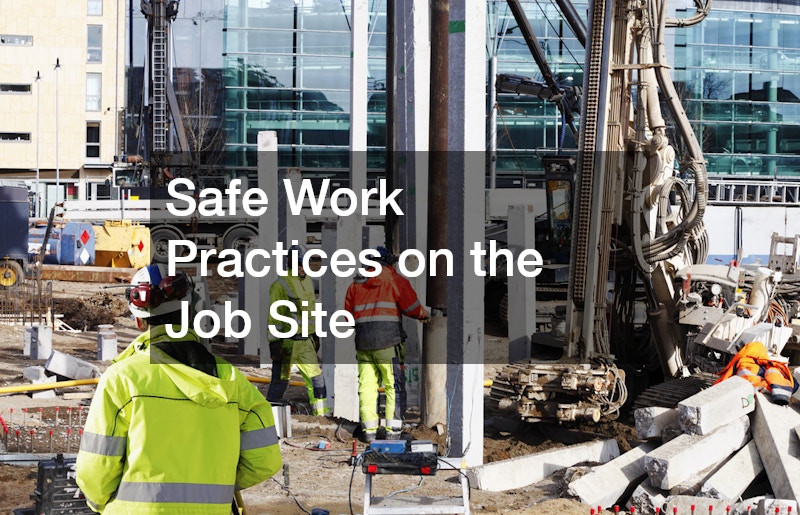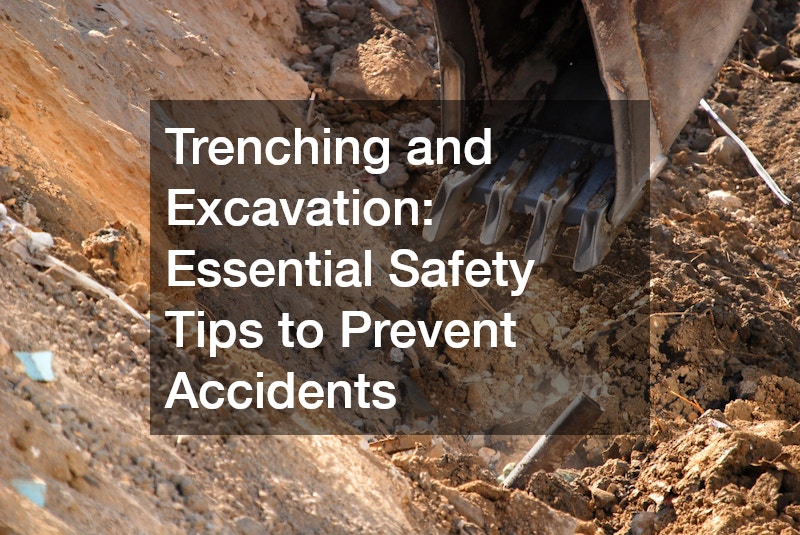Working in trenches and excavations is one of the most hazardous activities in the construction industry. With the constant risk of cave-ins, falling debris, hazardous atmospheres, and incidents involving heavy machinery, safety must be a top priority. As any construction company knows, adhering to proper safety protocols can make the difference between a safe job site and a life-threatening accident. This article outlines the essential safety tips to help prevent accidents and ensure the well-being of workers involved in trenching and excavation operations.
Understanding Trenching and Excavation Hazards
Trenching and excavation refer to any man-made cuts or cavities in the ground, created by earth removal. Trenches are narrow excavations where the depth is greater than the width but no wider than 15 feet. While these activities are necessary for many construction projects, they are fraught with danger. The primary hazard workers face during trenching and excavation is the risk of a cave-in, which can bury workers under thousands of pounds of soil within seconds.
A cubic yard of soil can weigh approximately 3,000 pounds, and when dirt falls from just six feet, it can strike a worker with the same force as a vehicle traveling at 35 miles per hour. The sheer weight and speed of falling soil make cave-ins potentially fatal. Additionally, workers are exposed to other hazards such as falling debris, toxic gases, electrocution from underground utilities, and accidents involving mobile equipment like excavators.
Pre-Planning: A Crucial First Step
To minimize these risks, pre-planning is essential. Before any excavation begins, a thorough job site evaluation must be conducted by a competent person. This evaluation includes assessing the soil conditions, locating and marking underground utilities (by contacting services like 811), and identifying potential hazards such as overhead power lines.
Once the initial evaluation is complete, the next step is to establish protective systems to prevent cave-ins and ensure a safe means of entry and exit for workers. These systems must be selected based on the type of soil and the depth of the trench. In addition, plans should include testing for hazardous atmospheres, implementing traffic control near the site, and ensuring that workers are properly trained in safety protocols.
Protective Systems for Trenching and Excavation
Protective systems are a critical part of trench safety. These include sloping, benching, shoring, and shielding.
– Sloping involves cutting back the trench walls at an angle inclined away from the excavation to prevent collapse. The steepness of the slope depends on the type of soil. For example, in the least stable soil (type C), a slope of one and a half feet back for every foot down is required.
– Benching is similar to sloping but involves cutting the trench walls in a step-like fashion. This method is effective in more stable soils but cannot be used in type C soil.
– Shoring systems use supports such as hydraulic struts to brace the sides of the trench and prevent cave-ins. Shoring systems are often used when space limitations prevent sloping or benching.
– Shielding involves placing a trench box into the excavation to protect workers from soil collapse. These boxes are frequently used in utility line installations where sloping or benching is impractical. The sides of the box provide stable support for the trench walls and must be installed and removed without workers entering the unprotected trench.
Daily Inspections and Competent Oversight
A critical part of ensuring trench safety is regular inspections conducted by a competent person. The conditions of a trench can change rapidly, particularly after rainstorms or other environmental changes. Because of this, daily inspections are necessary to identify and eliminate any new hazards before workers enter the trench.
The competent person is also responsible for ensuring that protective systems are properly installed and that the job site is following safety protocols. Workers should never enter a trench unless it has been inspected, the protective systems are in place, and there is a safe way to exit in case of emergency.
Safe Work Practices on the Job Site
Beyond protective systems and inspections, there are additional safe work practices that help minimize the risk of accidents. First and foremost, all workers must have safe access in and out of trenches that are four feet or deeper, using ladders, steps, or ramps. The maximum distance from any worker to the nearest ladder should be no more than 25 feet.
Additionally, excavated soil, tools, and heavy equipment should be kept at least two feet from the edge of the trench to prevent falling objects from injuring workers below. Workers must wear high-visibility vests when working near moving equipment, and the job site should be clearly marked to identify underground utilities.
For those working in frontline construction, especially in hazardous environments like trenches, it is crucial to ensure that all safety measures are in place. In cases where hazardous atmospheres may exist, such as in trenches deeper than four feet, the air must be tested for toxic gases, fumes, and low oxygen levels. If necessary, workers must use personal protective equipment to stay safe.
Conclusion
Trenching and excavation work is vital to many construction projects but presents a range of dangers that require careful planning and strict adherence to safety protocols. By following these essential safety tips — from pre-planning and protective systems to daily inspections and safe work practices — construction companies can minimize risks and create safer work environments for their employees. Remember, no trench is worth risking a life, and it is the responsibility of every construction company to prioritize safety on the job site.
.


